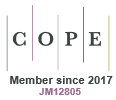101 Treatment with gonadotrophin-releasing hormone on Day 7 or 21 does not reduce pregnancy loss in dairy heifers receiving in vitro-produced embryos
B. J. Duran A , R. V. Sala B , P. L. J. Monteiro C , C. Gamarra C , M. Fosado B , E. Walleser C , A. Prata C , R. Gennari C , J. F. Moreno B , M. C. Wiltbank C and A. Garcia-Guerra AA The Ohio State University, Columbus, OH, USA;
B ST Genetics, Deforest, WI, USA;
C University of Wisconsin-Madison, Madison, WI, USA
Reproduction, Fertility and Development 32(2) 176-177 https://doi.org/10.1071/RDv32n2Ab101
Published: 2 December 2019
Abstract
Previous research has shown that induction of an accessory corpus luteum (CL) by administration of gonadotrophin-releasing hormone (GnRH) on Day 5 increases circulating progesterone and reduces pregnancy loss between Days 33 and 60 in heifers receiving in vitro-produced (IVP) embryos. Therefore, the objective of the present study was to determine whether timing of induction of an accessory CL influenced pregnancy loss in IVP recipients. Holstein heifers (n = 1,658) were synchronized using a modified 5-day CIDR CO-Synch protocol. Briefly, heifers received an intravaginal progesterone device (CIDR) on Day −8, Day −3: CIDR removed and first prostaglandin F2α (PGF2α) treatment, Day −2: second PGF2α, and Day 0: GnRH (G1, 100 µg of gonadorelin acetate). Oestrus expression was evaluated on Day 0 with the use of an oestrus detection device. Transfer of fresh IVP embryos was performed on Day 7 ± 1 after G1. At the time of transfer, heifers were randomly assigned, in a 2 × 2 factorial design, to receive GnRH (200 µg of gonadorelin acetate) or remain as Control (untreated) at two different times: Day 7 (time of embryo transfer (ET)) or Day 21. Thus, the following groups were formed: Control-Control (n = 410); Control-GnRH (n = 409); GnRH-Control (n = 419); and GnRH-GnRH (n = 420). All heifers were evaluated by transrectal ultrasonography to determine number, size, and location of CL on Days 5, 14, 21, 28, 32, and 60 and pregnancy status on Days 28, 32, and 60. Data collected from each heifer included embryo stage and quality, oestrus expression, body condition score, number of transfers, and technician. Pregnancies per embryo transfer (P/ET) and pregnancy loss data were analysed by logistic regression (SAS 9.4). Ovulation to Day 7 treatment was greater (P < 0.01) in GnRH treated heifers (70.0%; 585 out of 836) than in untreated Controls (2.7%; 22 of 819). Ovulation to Day 21 treatment was determined only in animals pregnant at Day 28 and was greater (P < 0.01) in heifers treated with GnRH (37.6%; 153 of 407) than in untreated controls (1.0%; 4 of 390). There was no effect of Day 7 treatment (P > 0.68) or Day 21 treatment (P > 0.18), nor a Day 7 × Day 21 treatment interaction (P > 0.48) on P/ET at Day 32 or 60 (Table 1). Treatment with GnRH on Day 7 or 21 did not alter pregnancy loss between Days 32 and 60 (P > 0.10). Heifers with an accessory CL present at Day 32 (11.7%; 41 of 350) had similar (P = 0.55) pregnancy loss compared with heifers with no accessory CL (14.4%; 54 of 375). The number of CL present on Day 32 did not affect (P = 0.23) pregnancy loss; however, heifers with 3 CL (4.9%; 3 of 61) tended (P < 0.10) to have reduced pregnancy loss compared with heifers with 1 CL (14.4%; 54 of 375) or 2 CL (13.2%; 38 of 289). In conclusion, treatment with GnRH on Day 7 or 21 induced an accessory CL; however, it did not affect P/ET on Days 32 or 60 and pregnancy loss.

|


